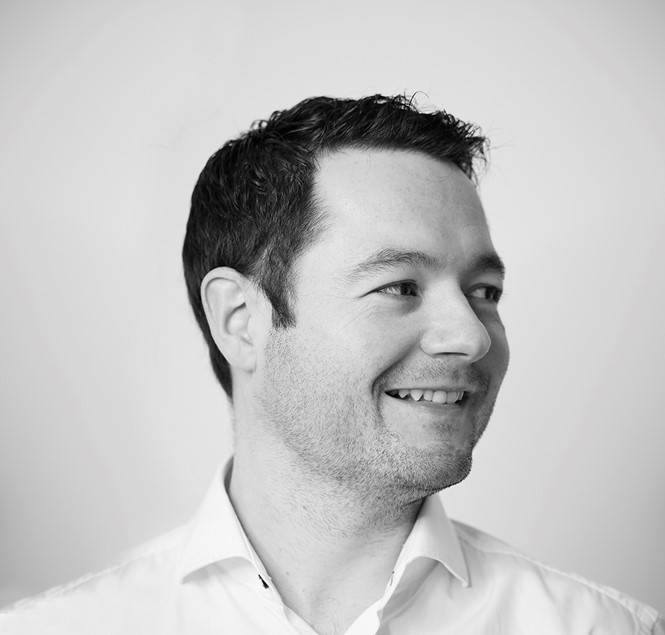Five minutes with Lee Fasciani

A brand’s relationship with technology is crucial for the intensely digitally focused business world of today. Keeping up with the times, incorporating the next best thing in technology and offering optimum digital expression have become catapults for a brand’s survival.
Lee Fasciani, co-Founder and creative director at Territory Projects, talks about bringing new digital products to market and how branding relates to digital product experience.
How do you think branding relates to digital product experience?
Branding is critical in creating a world beyond the functional benefits of a digital product. Done correctly, it creates a much deeper connection to the user than the nuts and bolts of functionality and reflects a brand’s attitude and spirit.
For a product to gain traction in a competitive market and ensure longevity, the product and the branding should be symbiotic – they should inform one another.
A brand’s values and principles should drive how to approach digital product design, from defining functionality to the user interface and service design, even details like animated elements and transitions. Likewise, the genesis of the product should help define the brand.
What are the key things you take into consideration when developing a new visual identity?
The logo has traditionally been seen as the most important visual marker for a business. It symbolises the company’s beliefs and acts as a beacon of recognition for current and future customers. Beyond that lies the wider visual identity, the system of colours, typography and imagery that further underpins the brand. But, in this digital-first world, we’re finding that the roles of each of these attributes is subtly shifting due to how we interact with modern products and services that exist purely through our phones and tablets. Here we are finding that the visual identity system, not the logo, is the most important element to help imbue quality, ownership and recognition, mainly because the logo is relegated to the opening screen or thumbnail and even sacrificed due to the limited screen real estate.
With this in mind, we understand that to create a recognisable brand we need to create a harmonious relationship between the logo design, wider visual identity and the functionality in the product. Whereby, if a single element was taken away – it would still be recognisable.
When designing identities for the digital space, we are conscious of the limitations of scale and detail due to resolution and space – but also the benefits of animation and interactivity which we’re seeing as influencing factors in the development of logos for modern brands.
How do you incorporate new technology in brand design?
We are currently interested in how brands can exist beyond the real world. There are exciting opportunities when thinking about how an identity exists in a virtual or mixed reality space, how our hybridised digital future will allow us to experience something as simple as a logo in a whole new way. When we worked with Sony Entertainment on their VR World identity, we considered the concept of being able to view the logo in a virtual world, being able to touch it, walk around it and what being inside it would feel like. Likewise, when we created the identity and augmented reality assets for Biosay, we wanted to explore how these designs would be experienced in a 3D and AR world.
What are the biggest changes in digital product development and brand design you’ve seen from when you first entered the industry?
This may be showing my age, but there was no such thing as a ‘digital product’ when I started out in the industry. There were obviously lots of pieces of proprietary software, but these were siloed products that you purchased in boxes and physically installed (via CD-ROM). The advent of the smartphone, the explosion of personal data and increase in wireless connection speeds have all lead to our hybridised digital existence – where our work, leisure, social and economic lives are intertwined with digital products and services.
What are the biggest challenges of your job?
The biggest challenge is the constant evolution of technology and how we adapt to the ever-changing requirements because of it. When I speak to my friends in managerial roles in other sectors, they know their job and their teams’ jobs inside out because what they produce or manage hasn’t changed its essentials in decades – I always feel like the people I employ know more than me! It’s a constant learning process. Other challenges are trying to balance good design principles – the latest technology and our client’s requests whilst always keeping the end user in mind is often tricky.
What is the piece of work you’ve done, you’re most proud of and why?
Our two latest projects Floww and Biosay stand out – because they demonstrate what we do best – which is combining our design thinking approach and great problem-solving capabilities to both digital product design and the overarching brand – something we believe is essential for today’s digital products and services. They demonstrate how we push visual identities, interaction and experience design into future-facing territory, where brand and product become one seamless intuitive whole.
For more from Transform magazine, follow us on Twtter @Transformsays












